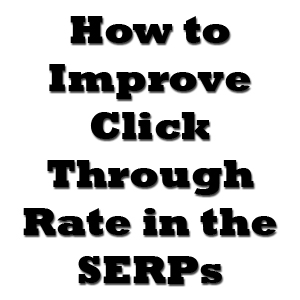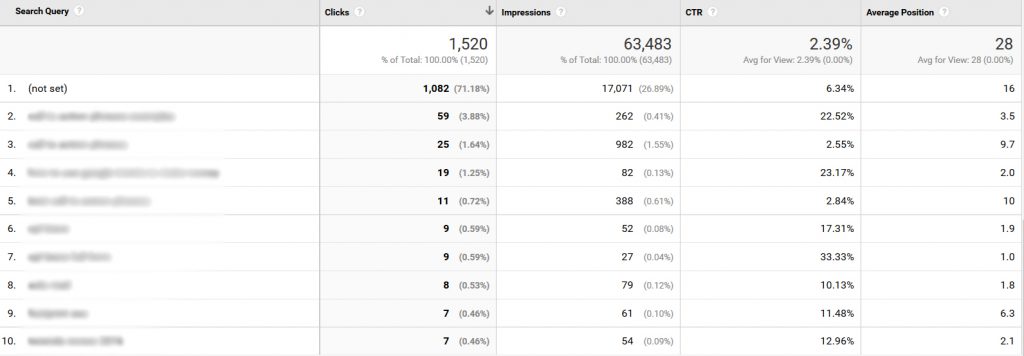As I recently discussed in my post on the most important thing in SEO in 2017, user metrics are more important than ever in determining your rankings.
One of the most important user metrics is click through rate in the SERPs.
Remember that, all things being equal, a website which gets more clicks for a search in Google’s SERPs than another site will eventually pass that site in the SERPs.
This is because Google is using its own users’ behavior to determine that that particular website is serving up the most relevant needs in relation to the search those users are making. As such, one such area you might dedicate a good bit of time to during your next SEO audit is improve your click through rate in the SERPs to your site.
How to Check Your Website’s SERPs Click Through Rate
The easiest way to check your website’s click through rate in the SERPs is by way of Google’s Search Console. There is a dedicated section which shows which percentage of impressions convert to clicks for your site.
 Here you can see the click through stats on the top 10 keywords for a website. Note that these are the top 10 keywords (9 if you don’t count the generic/not set) which people search for which lead them to the site.
Here you can see the click through stats on the top 10 keywords for a website. Note that these are the top 10 keywords (9 if you don’t count the generic/not set) which people search for which lead them to the site.
What I like about this data is that it provides a lot of insights as to which keywords we can work on to which we can use to improve both our click through rate, our rankings, and ultimately bring in more traffic, as well.
How to Improve Click Through Rate in the SERPs
There’s not much to work with in the SERPs besides the big three: title, meta description, and any schema markup/structured data you can integrate. Let’s talk about how to improve click through rate in the SERPs using the big three.
Title – Your title is the first thing people see in the SERPs for your listing. Create a title which they can’t help but click through. Make sure it catches their eye and is laser targeted to the search query which triggered it. It should be for most keywords if it was ranking in the first place, but for less popular or newer keywords which Google hasn’t figured out yet, you’ll want to make sure you don’t slack on a relevant title.
Meta Description – With everything else being equal with the title, it’s your meta description which could tip the click through scales in your favor. You can either tease the user with a quick run up which trails off before the payoff, or you can just provide a quick summary of what someone can expect if they click through to your page.
The summary works well because there’s never any confusion as to what the user can expect if he or she clicks through to your site (assuming they read the description) which means if they click through, they know what they’re in for and shouldn’t leave unexpectedly.
Schema Markup – Schema markup is code you can add to your site in order to add more presence and navigational functionality in the SERPs. You can use it to add additional pages, events, and a host of other information which is relevant to different websites depending on their niches. I’m planning a whole resource on how to employ schema markup soon, and I’ll link to it here once it’s completed.
Note that once you know that you’re ranking well for these keywords and experiencing a good click through, you want to ensure that your bounce rate is low for those pages which are ranking. Google likes to see a good click through rate and will reward you with a higher ranking because of it, but if it subsequently sees that most people who are clicking through to your site are exiting immediately at presumably not finding what they’re looking for, Google will take away that ranking just as quickly and banish you to page two or worse.
This is basically what I mentioned as being the most important thing in that SEO post I referenced at the beginning of this article because this is precisely how Rank Brain is operating.
As such, you’ll want to keep an eye on your bounce rates to make sure that people are finding what they’re looking for on every one of your pages, or more specifically that every page of your site is faithful and over-delivering on the content you’re advertising in your title and meta description in the SERPs.
ALSO, check out my complete resource on how to do an SEO content audit to ensure that every page of your site is optimized and working harder for you.
